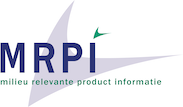Process information
| Key Data Set Information | |
| Location | NL |
| Geographical representativeness description | AcoSorb is produced in The Netherlands. The scope of the study includes application in The Netherlands. |
| Reference year | 2019 |
| Name |
|
| General comment on data set | Acosorb AcoSpray is a circular directly sprayed, seamless acoustical finish. The acoustical properties are impressive, sprayed in one phase up to 35mm also a super-fast application. Scope and type: The EPD type is Cradle-to-Grave. Data for this EPD is supplied by AcoSorb, EcoInvent 3.4 data is used as reference and calculation are performed in SimaPro 8.5.2.. All inventory data is available in the LCA project report. AcoSorb is produced in The Netherlands. The scope of the study includes application in The Netherlands. End of life scenario is 95% incineration and 5% landfill in The Netherlands. Representativeness: Not applicable as this is an environmental product declaration for a specific product from a specific manufacturer. Calculation rules: Cut off rules There are no indications that relevant data is not included in the scope of the study. The energy used for removal C1 has not been included due to insignificance. Energy related to the production of the glue has not been included due to insignificance. Data quality Specific data was collected from AcoSorb through a questionnaire, including information about logistics data e.g. transport, production information and end-of-life scenario's. Data collection period The data collection period for specific data was the year 2016. Allocations The energy related to installation A5 has been allocated by deternining the time of installation per functional unit and multiplying by the energy consumption of the machine. Energy related to the production of the cellulose fibers has been determined by the supplier. Scenarios and additional technical information: Processes in A1-A3 include the production and transport of all materials. There are no processes included in A3, components are mixed onsite and processes for this step are included in A5. No maintenance is required for AcoSorb products and therefore no impact in phase B is calculated. In the end of life phase 95% of the material will be incinerated with energy recovery and 5% will end up in landfill. Declaration of SVHC: None of the substances contained in the product are listed in the fiCandidate List of Substances of Very High Concern for authorisationfl, or they do not exceed the threshold with the European Chemicals Agency. More information: https://www.acosorb.nl/akoestisch-spuitwerk |
| Copyright | Yes |
| Owner of data set | |
| Quantitative reference | |
| Reference flow(s) |
|
| Time representativeness | |
| Data set valid until | 2024 |
| Time representativeness description | valid from (maandag 17 juni 2019) through (maandag 17 juni 2024) |
| Technological representativeness | |
| Technology description including background system | AcoSpray is made of two main components i.e. cellulose fibers which includes fire retardant and preservatives and adhesive. These components are mixed on site and applied by spraying. All materials are transported by truck. AcoSpray has a Reference Service Life RSL of 50 years. COMPONENT * [kg] Cellulose fibers confidential Adhesive confidential * > 1% of total mass |
Modelling and validation
| Subtype | specific dataset | ||||
| Data sources, treatment and representativeness | |||||
| Data source(s) used for this data set | |||||
| Completeness | |||||
| Validation | |||||
| |||||
| Compliance Declarations | |||||
| Compliance |
Compliance system name
|
Approval of overall compliance
|
Nomenclature compliance
|
Methodological compliance
|
Review compliance
|
Documentation compliance
|
Quality compliance
|
| Compliance |
Compliance system name
|
Approval of overall compliance
|
Nomenclature compliance
|
Methodological compliance
|
Review compliance
|
Documentation compliance
|
Quality compliance
|
Administrative information
| Data generator | |
| Data set generator / modeller | |
| Data entry by | |
| Time stamp (last saved) | 2021-02-03T11:58:50.708544 |
| Data set format(s) | |
| Publication and ownership | |
| UUID | 18b5fd7b-361f-4cde-95bf-2762922d0208 |
| Data set version | 04.01.000 |
| Registration authority | |
| Registration number | 1.1.00058.2019 |
| Owner of data set | |
| Copyright | Yes |
| License type | Free of charge for all users and uses |
Environmental indicators
Indicators of life cycle
